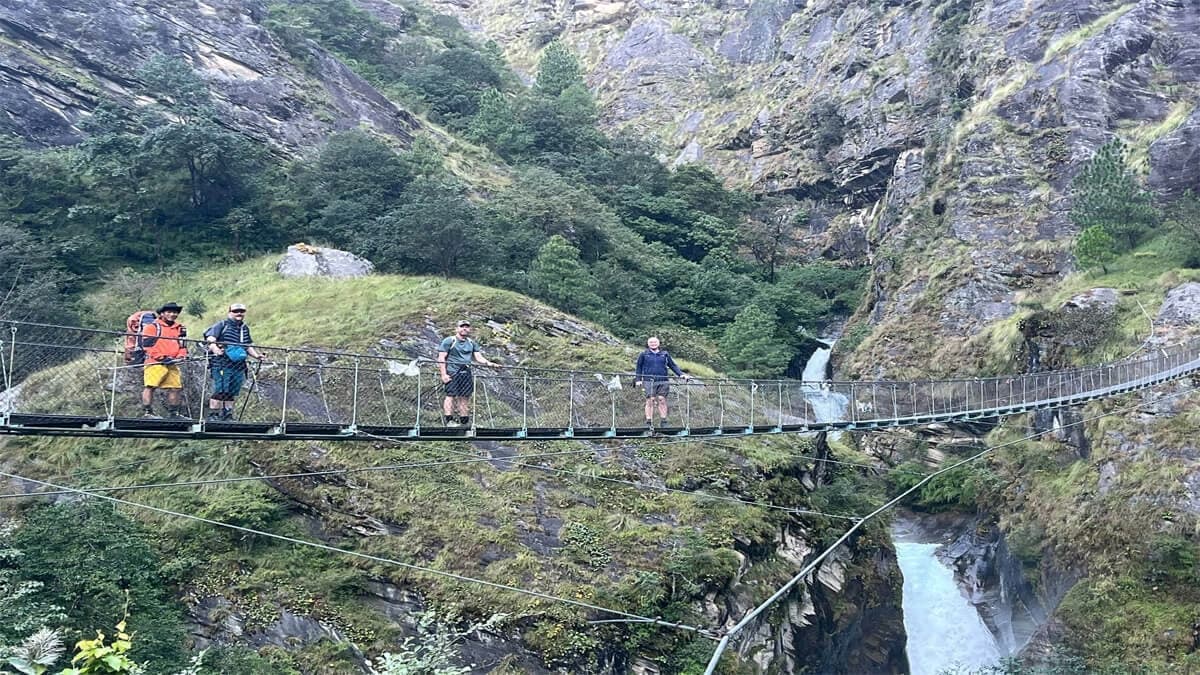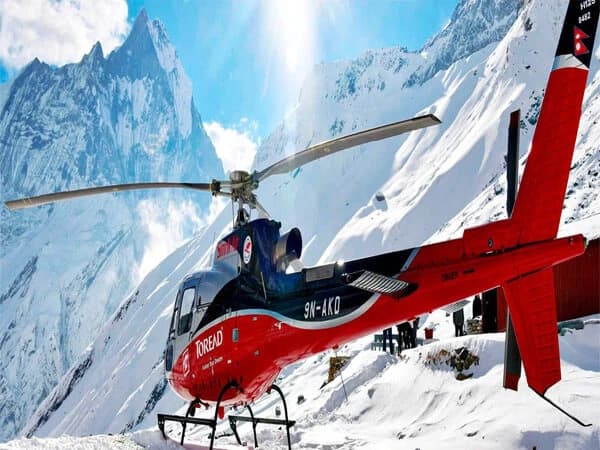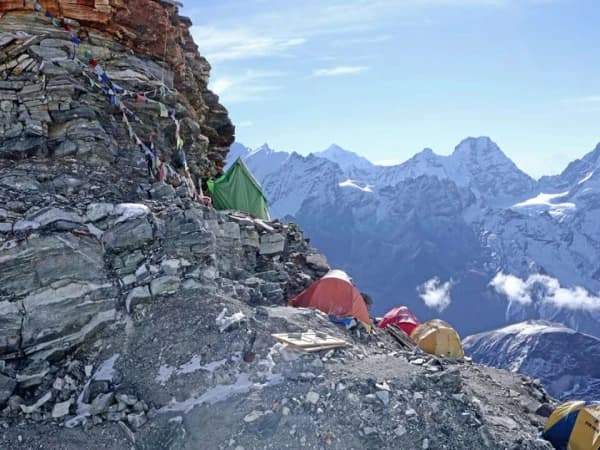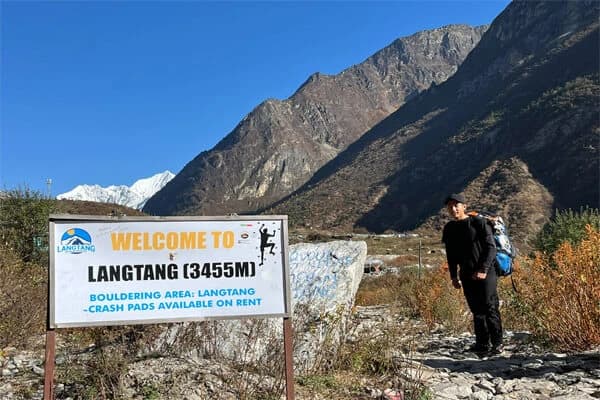Discover Nepal, a place where colorful cultures and old temples coexist with towering Himalayan peaks. Nepal provides a special fusion of adventure, spirituality, and scenic beauty, with its tallest mountains and revered locations like Swayambhunath and Pashupatinath. Discover historic towns, take in vibrant celebrations, and hike through unspoiled areas that exhibit both untamed nature and peaceful peace. Beyond the stunning landscape, what really makes every trip unforgettable is the friendliness and warmth of the Nepalese people.
Discover Nepal: Land of the Himalayas, Temples, and Timeless Beauty
What is it about Nepal that captivates every visitor's heart and soul? Perhaps it is the way prayer flags fly in the wind, transmitting silent prayers across time, or how the majestic Himalayas loom like old guardians above serene valleys. With its mountains, temples, and kind grins, Nepal is more than just a nation; it is a living narrative.
Every region of Nepal, from the tallest peaks in the world to ancient temples, narrates a story of tenacity, devotion, and the wonders of nature. Here, the pace of existence seems eternal, driven by nature, faith, and a quiet power ingrained in the culture. Nepal provides an experience that lingers in your memory long after you have left, whether you are drawn to the untamed beauty of isolated Himalayan routes or the spiritual serenity of Kathmandu's temples.
Explore that essence by reading this blog post, "Discover Nepal: Land of the Himalayas, Temples, and Timeless Beauty," where adventure meets tranquility, nature and spirit coexist, and every traveler finds not only a place to visit but a mirror of something timeless within themselves.
The Majesty of the Himalayas for Nepal Tour
Many people refer to Nepal as the "roof of the world," and with good reason eight of the world's fourteen highest peaks, including Mount Everest (8,848.86 m), are located there. In addition to being a natural wonder, Nepal's Himalayas serve as its spiritual and cultural foundation, influencing its customs, identity, and landscapes. From tranquil valleys to snow-capped summits, this powerful mountain range provides experiences that appeal to the body and the spirit.
Home to the World’s Highest Peaks
Across the northern border lie the Nepalese Himalayas, which are home to fabled peaks like Annapurna, Dhaulagiri, Manaslu, Cho Oyu, Makalu, Kanchenjunga, Lhotse, and Everest. Trekkers, climbers, and dreamers from all over the world come to these peaks because each one has a unique tale to tell. The Himalayas are a living representation of wonder and resiliency, not simply rock and ice. These mountains' immense size and beauty serve as a reminder to tourists of the majesty of nature and the tiny but significant role that humans play in it.
Popular Himalayan Trekking Routes
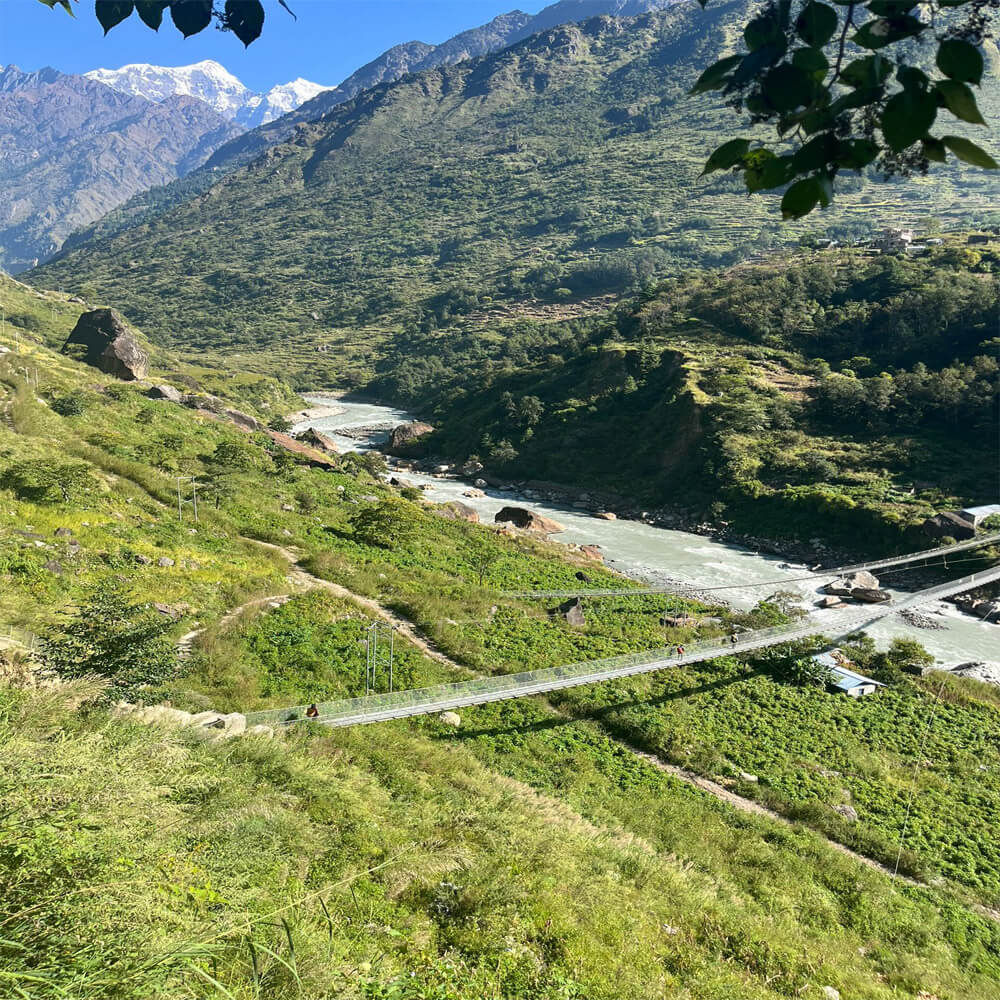
Trekking in Nepal provides a unique opportunity to experience both adventure and cultural immersion. After venturing deep into Sherpa communities and Buddhist temples, the Everest Base Camp Trek ends with breath-taking vistas of Everest herself. From subtropical woods to high mountain passes, the Annapurna Circuit provides a variety of vistas. While the Manaslu Circuit and Upper Mustang Trek provide isolated, less-traveled paths for those seeking tranquility, the Langtang Valley Trek blends natural beauty with cultural warmth. Every route narrates a tale of people, mountains, and the curiosity of the human spirit.
Cultural and Spiritual Connection
For many ages, both Buddhists and Hindus have revered the Himalayas. Pilgrims travel to holy locations like Gosaikunda Lake and Muktinath Temple for blessings because locals think the peaks are the home of the gods. Along pathways, the whirling mani wheels and fluttering prayer flags symbolize the close spiritual ties between religion and the natural world. As teachers of perseverance and humility, the mountains are not only climbed but also honored, contemplated, and revered.
Discover Nepal Through Its Towering Peaks
You must start in the Himalayas, where the earth meets the sky, if you want to discover Nepal completely. These snow-capped giants, which stretch across the north like a powerful spine, characterize Nepal's spirit as much as its topography. The mountains are living examples of faith, adventure, and perseverance; they are more than just beautiful scenery. For tourists seeking significance beyond action, the Himalayas are where silence meets grandeur, and every sunrise over white ridges seems like a private revelation.
Nepal Travel Guide to the Himalayas
The Himalayas are the beating heart of Nepal, as any reasonable Nepal travel guide will tell you. They are home to eight of the fourteen highest peaks in the world, including Sagarmatha, also referred to as Mount Everest. The marvel does not end there, though. Each of the Manaslu region, Langtang Valley, and Annapurna range offers a unique rhythm of local life and sceneries. Trekkers can relax in comfortable teahouses owned by Sherpa families, traverse prayer-flag bridges, and meander through rhododendron forests.
Nepal's paths encourage both the body and the spirit to explore together, whether you are seeking adventure or reflection. And the allure of it? To experience the magic, you do not need to be a climber.
Places to Visit in Nepal’s Mountain Regions
Few experiences among the several places to visit in Nepal are comparable to being at Everest Base Camp, where climbers train for their aspirations of reaching the summit. The Annapurna Circuit, which circles past villages, waterfalls, and high hills, provides a kinder but no less magnificent experience. Just north of Kathmandu, Langtang feels secluded and pristine, which makes it ideal for hikers who want peaceful routes.
Those who intend to Visit Nepal should think about visiting these areas in the spring or fall, when the sky are clear and the paths are brimming with life and color.
Things to Do in Nepal’s Himalayas
The list of things to do in Nepal’s mountains is enormous and goes far beyond hiking. You may paraglide over Pokhara's lakes, take a picturesque trip over Everest, or just relax next to a monastery and observe the prayer wheels in motion. In the highlands, every moment serves as a reminder that things move more slowly, differently, and with greater appreciation.
Nepal Tourism and the Spirit of the Mountains
In addition to its peaks, Nepal tourism flourishes because of what they stand for: peace, purity, and tenacity. Visitors come to the Himalayas to feel little and depart with a sense of fullness. Nepal's mountains greet you as more than just a tourist; they welcome you as someone looking for something timeless, whether you are there for the adventure, the culture, or the peace.
Temples and Spiritual Sanctuaries
Towering peaks are frequently the first thing that come to mind when someone thinks about Nepal, but the nation's temples, monasteries, and historic sanctuaries are equally important. For centuries, the temples in Nepal have molded the country's identity as living places of devotion, culture, and artistry. They are more than just religious monuments.
UNESCO World Heritage Sites in Nepal
Most of the UNESCO World Heritage sites in Nepal have something to do with the country's rich spiritual and cultural heritage. Seven of them are located in the Kathmandu Valley alone, making it a unique location for such a modest collection of historical and holy beauties. From the huge temple complexes to the stone-paved courtyards, every location narrates a tale of faith and artistry that has been handed down through the ages. These locations are not static; they are alive with chants that reverberate throughout the valleys, incense, and vitality.
Kathmandu Valley Heritage Sites
The three historic cities, including Kathmandu, Patan, and Bhaktapur are part of the Kathmandu Valley heritage sites and are functioning as living museums. Each city's Durbar Square features elaborately carved wooden palaces, temples in the pagoda style, and courtyards where colorful celebrations take place. As a protector of peace, the Swayambhunath Stupa, also called the Monkey Temple, watches over the city. In the meantime, one of the biggest stupas in the world, the Boudhanath Stupa, exudes tranquility and draws Buddhist pilgrims from all over the world. On the other hand, the holy Pashupatinath Temple, which is devoted to Lord Shiva, symbolizes the spiritual center of Hindu Nepal, where life and death coexist alongside the Bagmati River. Here are the UNESCO World Heritage sites that you can visit in Kathmandu Valley:
Kathmandu Durbar Square
Formerly the Malla and Shah kings' royal palace complex, Kathmandu Durbar Square is a living museum of Nepalese history, art, and architecture. It is encircled by elaborately carved wooden temples, courtyards, and shrines and is situated in the center of old Kathmandu. The Kumari Ghar, the home of the Living Goddess, as well as ancient structures like the Taleju Temple and Hanuman Dhoka Palace are located in the square. Restoration has kept its beauty intact despite the 2015 earthquake's devastation. Vibrant, spiritual, and replete with tales of historical devotion and grandeur, the square transports visitors to medieval Nepal.
Patan Durbar Square
In Lalitpur, across the Bagmati River, Patan Durbar Square is a masterpiece of Newar craftmanship. Constructed completely of stone in the 17th century, the Krishna Mandir and other beautiful temples and shrines embellish the area. Sacred art and cultural treasures are on display at the Patan Museum, which was once the royal palace of the Malla rulers of Patan. The area's red-brick courtyards, bronze sculptures, and golden windows all showcase the combination of Buddhist and Hindu elements. Offering a window into Nepal's enduring architectural and spiritual legacy, Patan Durbar Square continues to be a bustling gathering place for craftspeople, pilgrims, and tourists.
Bhaktapur Durbar Square
East of Kathmandu, Bhaktapur Durbar Square, sometimes called Bhadgaon, is a stunningly maintained medieval city. Known for its pagoda-style temples and red-brick alleyways, it is home to famous buildings like the Golden Gate, Vatsala Temple, and the 55-Window Palace. Bhaktapur is renowned for its woodworking, ceramics, and customary celebrations that continue to adhere to centuries-old customs. With each courtyard narrating a tale of devotion and artistry, the square has a serene, rustic beauty. Bhaktapur, a UNESCO World Heritage Site, is a living legacy that gives tourists a glimpse into Nepal's proud Newar civilization's artistic heritage and medieval past.
Swayambhunath Stupa (Monkey Temple)
Located on a hilltop west of Kathmandu, Swayambhunath Stupa, also known as the Monkey Temple, is one of the most revered and ancient Buddhist temples in Nepal. With Buddha's all-seeing eyes painted on its golden spire and white dome, it commands a view of the Kathmandu Valley. With shrines and monuments honoring both Buddhism and Hinduism, the stupa represents unity between the two religions. In the breeze, hundreds of prayer flags fly, bearing mantras. The calm ambiance is lively due to the presence of the native monkeys. Its 365 stairs are a popular destination for pilgrims and tourists seeking spiritual benefits and expansive city vistas. Swayambhunath exudes knowledge, tranquility, and a timeless spiritual vitality.
Boudhanath Stupa
Situated on the northeastern outskirts of Kathmandu, the Boudhanath Stupa is a focal point of Tibetan Buddhism in Nepal and one of the biggest stupas in the world. Its enormous white dome radiates spiritual serenity, crowned with a gilded tower and Buddha's placid gaze. Monasteries, stores selling thangkas and prayer wheels, and pilgrims engaging in kora (circumambulation) encircle the stupa. As a representation of compassion and enlightenment, Boudhanath has long been a haven for Tibetan monks and followers. Butter lamps, prayers, and chanting illuminate the stupa in the evening, making it an eternal symbol of harmony and faith.
Pashupatinath Temple
The holiest Hindu site in Nepal, Pashupatinath Temple is devoted to Lord Shiva and is located on the banks of the Bagmati River. Reflecting its architectural magnificence are the temple's silver doors and two-tiered golden ceiling. The main temple is only open to Hindus, although tourists are welcome to watch from the other side of the river. Numerous shrines, cremation ghats, and sadhus (holy men) conducting rituals are also part of the temple complex. Pashupatinath is a location where spirituality and reality collide, symbolizing the never-ending cycle of life and death. It is one of the most potent spiritual landmarks in South Asia because of its deep energy, holy rituals, and long-standing customs.
Changu Narayan Temple
The oldest Hindu temple in Nepal is Changu Narayan Temple, which is situated close to Bhaktapur on a hilltop east of Kathmandu. It is a treasure of Nepalese art and culture, dating back to the 4th century and dedicated to Lord Vishnu. The elaborately carved sculptures of Vishnu made of stone, wood, and metal in the temple combine deep spiritual symbolism with craftsmanship from the Licchavi dynasty. The nearby settlement of Changu provides views of the green valley and traditional Newari culture. Changu Narayan, a UNESCO World Heritage Site, is a timeless defender of Nepal's traditional architecture, dedication, and art.
Lumbini – Birthplace of Buddha
Lumbini – the birthplace of Buddha is located further south and is one of the world's most revered pilgrimage sites. Visitors experience a sense of eternal tranquility here, next to the Maya Devi Temple and beneath the shade of the Bodhi tree. Tibetan, Thai, Burmese, and Japanese monasteries all contribute to the world's harmony in this holy place. Spirituality there surpasses religion and serves as a reminder to all visitors of the universal human desire for enlightenment.
Nepali Art and Architecture
The exquisite layers of pagoda-style roofs and prayer wheels and stone carvings are examples of Nepali art and architecture that exemplify both creativity and dedication. Every little element, like a bronze statue, a hand-carved window, or a flying prayer flag, embodies the soul of many generations of craftspeople. You sense history breathing about you, alive and eternal, as you stroll through these hallowed places. This is the real meaning of Nepal's ageless beauty.
Cultural Diversity and Living Traditions
Nepal is a living museum of cultures, colors, and customs; it is more than just a country of mountains. For tourists that value people as much as places, it is the ideal trip because every valley, village, and festival offers something new.
Travel Photography Nepal: Capturing Faces and Festivals
Anyone who is interested in travel photography in Nepal will find the nation to be a magical place. Every picture tells a narrative, from the vivid prayer flags fluttering above mountain passes to the golden light above the Himalayan peaks. The alleyways of Kathmandu, where monks stroll alongside rickshaw drivers, or isolated villages where time stands still, are popular destinations for photographers. Every picture becomes a window into Nepal's soul, whether it is getting a smile at a tea break or capturing the vibrant display of Holi.
Food and Cuisine of Nepal: A Flavorful Journey
Examining the food and cuisine of Nepal is similar to exploring the country's landscape. Food ties visitors to the rhythm of everyday life, whether it is the comforting dal bhat shared with hiking guides in the hills or the hot momos in Kathmandu's corner booths. Sherpa butter tea, fiery Thakali curries, and Newari feasts full of fried and fermented treats are just a few examples of the distinct flavors found in each region. Here, meals are a collective act of care and community, frequently shared with laughter and stories, and are not hurried.
Hospitality in Nepal: Where Strangers Become Family
The hospitality in Nepal is among the most memorable experiences for any traveler. The air seems to be filled with warmth, whether you are staying in a family homestay or a mountain tea house. With a calm kindness, locals welcome you into their homes and hearts, making you feel more like a friend than a visitor. Namaste is more than just a salutation; it is a sincere desire for harmony and harmony.
Local Markets and Crafts: The Heartbeat of Daily Life
Explore Nepal's local markets and crafts scene if you want to experience the country's energy. Craftspeople create eternal beauty out of clay, metal, and wood in the little streets of Patan and Bhaktapur. Handwoven scarves, prayer wheels, and jewelry abound in vibrant marketplaces; each piece reflects the talent and enthusiasm of the community.
Hidden Gems of Nepal: Culture Beyond the Guidebook
Finally, stray off the major highways in search of hidden gems of Nepal. Take in a local celebration, tour lesser-known communities, or just stop and listen to the reverberation of temple bells after sunset. Discover Nepal's genuine gift in these peaceful nooks and crannies: a culture that is lived with elegance, nuance, and eternal beauty rather than being played for tourists.
Nature Beyond the Mountains
Beyond its majestic Himalayan peaks lies Nepal's natural splendor. With its verdant rainforests, glistening lakes, and undulating hills, the nation is a nature lover's dream. This section examines Nepal's varied natural features, which show off the country's serene, green, and vibrant side.
National Parks in Nepal
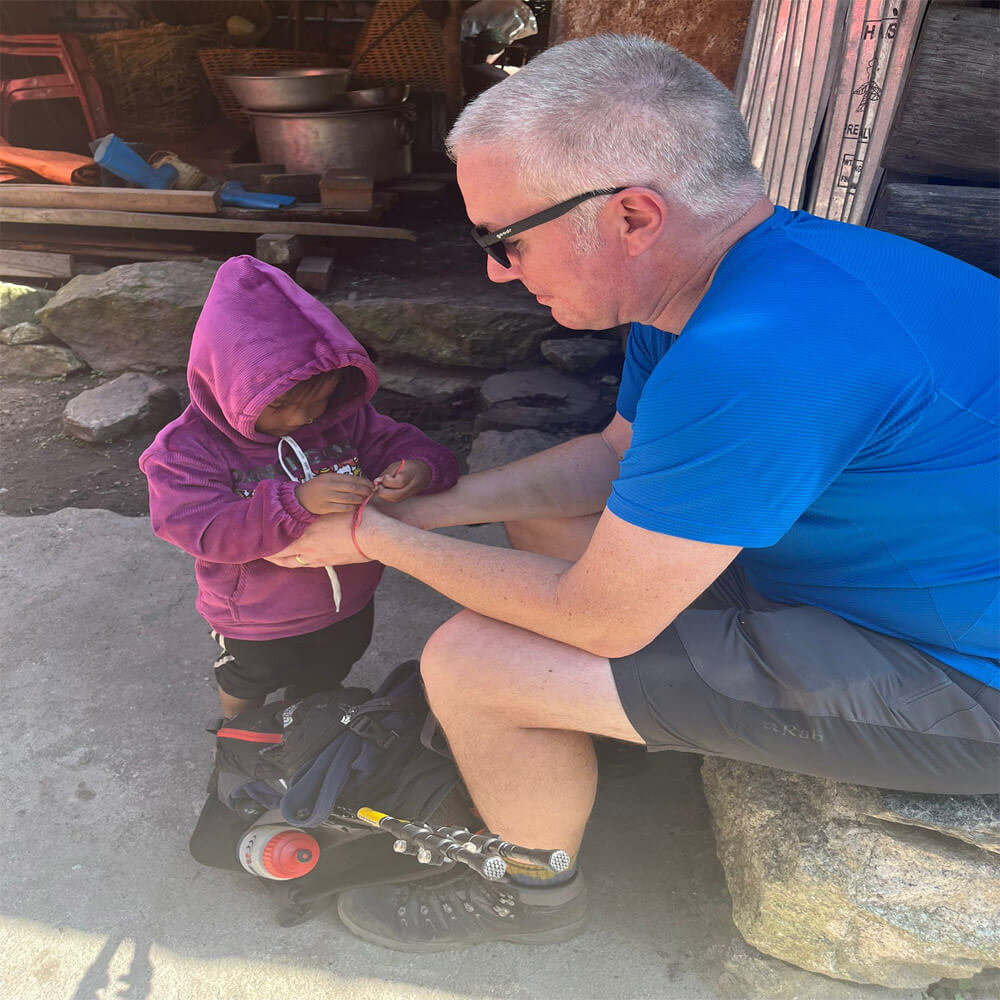
The national parks in Nepal safeguard a range of environments, from tropical forests to icy peaks, outside of the trekking areas. Sagarmatha National Park envelops the Everest region with spiritual energy and high-altitude fauna, while Chitwan and Bardia National Parks are renowned for their abundant biodiversity. Travelers can observe how Nepal protects its natural resources via conservation and responsible tourism by visiting these parks. Every park has a unique tale of resiliency, with traditional human settlements coexisting peacefully with historic ecosystems.
Chitwan National Park
Situated in southern Nepal's subtropical lowlands, Chitwan National Park is a UNESCO World Heritage Site and home to some of Asia's finest wildlife reserves. In addition to more than 500 bird species, it is home to wild elephants, Bengal tigers, and one-horned rhinoceroses. Canoe trips on the Rapti River, forest safaris, and Tharu traditional performances in neighboring communities are also available to tourists. The park is ideal for families and environment lovers looking for a different kind of experience because of its lush grasslands and sal forests, which provide a tranquil contrast to Nepal's alpine scenery.
Bardia National Park
Bardia National Park in western Nepal is less congested than Chitwan and provides a more remote forest experience. Its expansive wildness is home to elusive tigers as well as elephants, rhinos, and leopards. The park's Karnali River is home to a variety of aquatic life, including freshwater dolphins. For those seeking off-the-beaten-path travel and a peaceful way to experience Nepal's untamed side, Bardia is the perfect destination. Traveling through eco-lodges or community-run homestays gives the experience a more sustainable feel.
Lakes and Rivers
Beyond woods and meadows, Nepal's lakes and rivers provide serenity and splendor to any journey. Phewa Lake in Pokhara, which reflects the breathtaking Annapurna range, welcomes guests to paddle or just sit and enjoy the sunset. Far to the west, encircled by pine forests and mountain slopes, Rara Lake, also referred to as the "Queen of Lakes," sleeps peacefully at a high elevation. White-water rafting is ideal on rivers like the Trishuli and Bhote Koshi, which provide both excitement and peace.
Hill Stations and Eco Escapes
Hill stations like Nagarkot, Dhulikhel, and Bandipur in Nepal offer tranquil havens for visitors looking for expansive vistas and clean mountain air. These settlements, which provide morning views over the Himalayas and chances for quick walks, combine natural beauty with local personality. Many of these areas are embracing eco-tourism, encouraging travelers to minimize their environmental footprint while enjoying nature responsibly.
Exploring Nepal Hiking Trails Beyond the Peaks
People typically envision snow-capped mountains when they think about Nepal. However, the Himalayas are just one aspect of the nation's beauty. The Nepal hiking trails provide stunning vistas at every turn, from verdant mid-hill forests to undulating valleys and placid lakes. Paths such as the Ghandruk Loop in the Annapurna region or the Shivapuri climb in Kathmandu show a more gentle and verdant side of the nation. These short climbs lead you past terraced fields, rhododendron forests, and quaint towns where people live in harmony. Nepal's paths provide experience that seems very intimate and connected to nature, even when you are not near the tall peaks.
Eco-Tourism in Nepal
The way that eco-tourism in Nepal fosters a connection between tourists and the local population is among its most lovely features. Numerous protected areas and hotels with a local focus promote ethical travel that helps sustain local economies. For example, eco-lodges owned and operated by local families encourage environmentally friendly trekking methods in the Annapurna Conservation Area. Visitors can observe directly how modest actions, such as avoiding plastic, utilizing solar power, or buying locally grown food, contribute to the preservation of the delicate Himalayan ecosystem. In Nepal, eco-tourism is more than just a fad; it is a growing movement that aims to bring people and nature into peace.
Scenic Beauty of Nepal
Golden sunsets over terraced fields, lush woods opening into serene valleys, and high peaks reflected in turquoise lakes are all examples of scenic beauty of Nepal. Nepal's scenery shift with each passing horizon, from the serene lakeside views of Pokhara to the foggy hills of Ilam and the dry deserts of Mustang. Every trip, no matter how short, feels like a dialogue with the natural world in this nation.
Some of Nepal's most remarkable locations are close to Kathmandu and provide a fascinating mix of spiritual charm, cultural legacy, and natural beauty. Southwest of the capital, the Chandragiri Hills are a well-liked getaway spot offering expansive vistas of the Himalayas, including Mount Everest on clear days. The high Baleshwar Mahadev Temple offers a serene spiritual touch, while the picturesque cable car ride to the summit adds excitement.
Near Lalitpur, in the little Newar village of Khokana, time seems to have stopped. It is well-known for its true way of life unaffected by modernism, medieval courtyards, and traditional mustard oil production. Its winding roads offer a window into the architecture and culture of rural Newari.
Situated on a hill to the north of Kathmandu, Kapan Monastery is a tranquil Tibetan Buddhist monastery that offers spiritual instruction and meditation retreats. With chanting and prayer flags all around, it provides a peaceful escape from the bustle of the city.
Khokana, Kapan, and Chandragiri collectively capture Nepal's singular harmony of spirituality, culture, and nature. From mountain views and ageless customs to the serene serenity of monastic life, each location offers a unique perspective of the nation, making them must-see locations for tourists looking for genuine Nepalese experiences.
Adventure Awaits: Trekking and Beyond
Few locations rival the Himalayas of Nepal in terms of adventure; every path, ridge, and snow-capped peak seems to be calling out for exploration. Nepal is a living journey that tests your physical limits, opens your heart, and awakens your soul. It is more than just a place to visit. Regardless of your preference for adventurous climbs or fabled journeys, this region offers something for every high mountain enthusiast.
Trekking in Nepal
Trekking in Nepal is an emotional experience as much as a physical one. The paths lead you through tranquil valleys, historic monasteries, and pristine villages. Nepal provides routes for all skill levels, from easy foothill treks to high-altitude excursions. Only the Himalayas can offer the sense of purpose and tranquility that comes from walking in the rhythm of snow-covered peaks and fluttering prayer flags.
Mount Everest Region
For trekkers and mountaineers, the Mount Everest region continues to be the crown jewel. Known locally as the Khumbu, this region is home to Sagarmatha, often known as Everest, the highest peak in the world, as well as the Sherpa people, whose tenacity and friendliness serve as an inspiration to tourists from all over the world. Every step of the Everest Base Camp Trek puts you one step closer to the world of giants, making it a voyage of endurance and wonder. Routes like the Everest View Trek and Gokyo Lakes Trek provide breathtaking views without posing significant altitude challenges for those looking for a shorter trip.
Annapurna Region
If Everest is a sign of grandeur, the Annapurna region is a symbol of harmony, where comfort, culture, and nature all coexist harmoniously. Trekkers can choose from routes like the Annapurna Base Camp Trek, Ghorepani Poon Hill, and the Annapurna Circuit, which all provide stunning mountain views and a variety of landscapes. Terraced fields, rhododendron forests, and high mountain passes are all within days' walking distance, adding to the area's allure.
Mountain Climbing in Nepal
The next step up in adventure is mountain climbing in Nepal for the daring. Peaks like Island Peak, Mera Peak, and Lobuche East offer trekkers to experience real Himalayan mountaineering without the extremes of Everest itself. Climbing in Nepal is about more than just reaching the top; it is about putting your stamina to the test, honoring the environment, and experiencing the humbling force of the mountains.
In every way, adventure in the Himalayas of Nepal is characterized by spirit rather than just altitude. Every trip transforms you and serves as a reminder that you just discover in the mountains rather than conquer.
Adventures Beyond Trekking
Trekking in the Himalayas is frequently the first thing that people think of when they think of Nepal. Beyond its well-known routes, however, is a realm of thrilling experiences that highlight the nation's remarkable natural diversity, from towering mountains and undulating hills to untamed rivers and expansive vistas. Nepal is a veritable paradise for those who enjoy adventure.
Paragliding in Pokhara
Often referred to as Nepal's adventure capital, Pokhara provides one of the world's greatest paragliding experiences. It is an amazing experience to fly above Phewa Lake with the Annapurna and Machhapuchhre hills in the background. Sarangkot Hill, the take-off location, offers a panoramic view of the valley and glistening water below. It is accessible to both novices and experts, safe, and picturesque.
White-Water Rafting and Kayaking
Nepal's snow-fed rivers provide an amazing experience for people who enjoy river excursions. The Bhote Koshi and Sun Koshi provide more strenuous rides for thrill-seekers, while the Trishuli River is well-liked by beginners due to its mild rapids. Camping beside riverbanks is a common feature of kayaking and rafting excursions, where visitors may unwind under the stars and take in the sound of the rushing water.
Mountain Biking Across Rugged Trails
The landscape of Nepal is ideal for mountain biking. Trails demand endurance and expertise as they meander through woodland trails, terraced slopes, and historic settlements. The Annapurna Circuit, Lower Mustang, and the Kathmandu Valley Rim are popular places to go bicycling. In addition to the physical challenges, riders relish the cultural immersion that comes from traveling through nearby communities, engaging with locals, and getting a close-up look at rural life.
Helicopter Tours in the Himalayas
Helicopter trips provide a once-in-a-lifetime opportunity for luxury or time-constrained tourists to visit the Himalayas. For example, in a matter of hours, tourists can fly above glaciers and land close to the base of the tallest mountain in the world with the Everest Base Camp Helicopter Tour. In a same vein, the Annapurna and Langtang heli trips blend comfort and convenience with expansive views.
Embracing the Spirit of Adventure
Adventures in Nepal are much more than just walking paths; they arouse the senses and the soul. Flying above the clouds, racing down rivers, or gliding through the skies all of these activities foster a strong bond with the natural world. These excursions show visitors who want to experience Nepal in a way that is daring, stunning, and never-endingly exciting.
Hospitality and Warmth of the Nepalese People
Beyond its mountains and temples, Nepal is a place where hospitality and friendliness characterize daily existence. The kindness of the locals, in addition to the splendor of the Himalayas, is what makes visiting Nepal so unique. From bustling Kathmandu streets to isolated mountain villages, every "namaste" is sincere and every smile is real. Look more closely at how Nepalese hospitality and local life make such an effect on visitors.
A Culture of Hospitality
In Nepalese tradition, the idea that "Guest is God," or "Atithi Devo Bhava," is deeply ingrained. Locals greet guests with tea, food, and conversation whether you are trekking across the Everest region, exploring a remote village, or staying at a Newari home. They treat you like family and do more than just host. People are generous with what they have, even if they have little. Visitors can get a sense of the kindness and simplicity that characterize life in Nepal's hills and valleys thanks to this hospitality.
Life in the Villages
Life in Nepal's rural areas revolves around the land's rhythm. Roosters and prayer bells ring out in the early morning, and days are devoted to farming, weaving, or caring for animals. Often constructed of clay and stone, houses have terraces that look out over the mountains. A homestay provides visitors with a glimpse into this genuine way of life. Lentils, rice, and locally grown veggies are the foods that the family eats, and you discover how closely bonded humans are to the environment and to one another. There’s no rush here, only the quiet satisfaction of living simply and meaningfully.
The Heart Behind Every Nepal Trip Itinerary
Mountains, temples, and trekking are frequently the main attractions on travelers' "Nepal trip itinerary" lists. The human connection, however, is what really makes each journey here meaningful. You will find unrestrained grins and unasked-for assistance everywhere you go, from the bustling streets of Kathmandu to the serene paths of the Annapurna highlands. By providing tea in mountain lodges, blessings in temples, and laughing that transcends all language barriers, the Nepalese people have a way of making guests feel like family.
In Nepal, being hospitable is a way of life rather than a service. Whether you stay at a guesthouse in the city or a distant town, you will notice that the hospitality is sincere and profound.
Beyond the Top Attractions in Nepal
Of course, Top attractions in Nepal including the lakeside views of Pokhara, the Boudhanath Stupa, and Bhaktapur Durbar Square are unforgettable. However, it is frequently the little interactions with locals that last the longest, like eating dal bhat in a teahouse, talking with a trekking guide about his mountain upbringing, or witnessing villagers getting ready for a celebration. These encounters serve as a reminder that Nepal's people are its greatest asset, not simply its natural beauty.
Your tour becomes more than just a sightseeing excursion; it becomes a voyage of appreciation and connection as each tale, smile, and shared cup of tea adds soul.
The Spirit of a Nepal Travel Blog
It seems that every Nepal travel blog talks about how welcoming the nation is to visitors. Most people leave feeling like they belong, regardless of whether they came for culture or adventure. The unseen thread connecting all of the experiences is the people's humor, resiliency, and humility.
In addition to being your hosts, the locals give you heartfelt advice and share their passion for the mountains and reverence for the natural world. It is this ingrained friendliness that transforms ordinary experiences into enduring memories.
Best Time to Visit Nepal for Human Connection
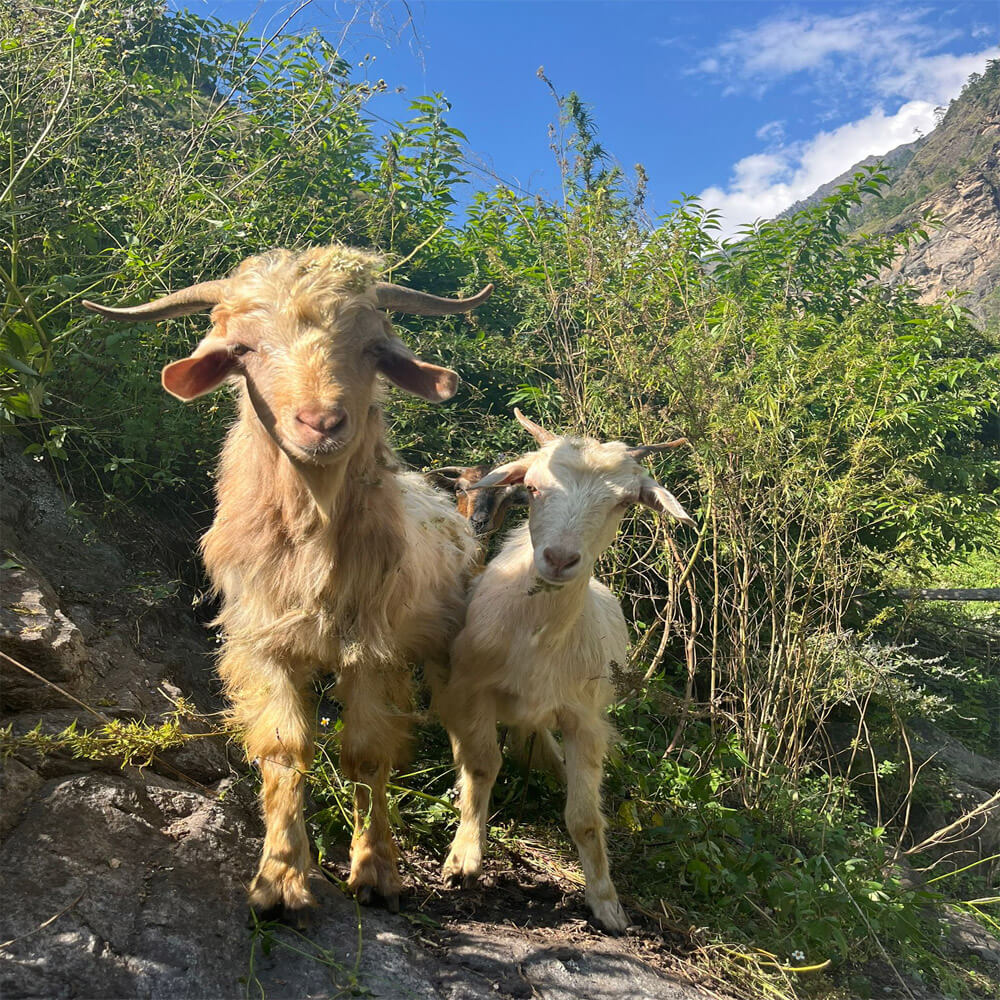
All year long is the ideal time to enjoy the warmth of people, although spring and fall are the best time to visit Nepal for trekking. Nepalese hospitality is always warm, kind, and full of subtle elegance, regardless of the season. Whether you’re here for adventure travel in Nepal or cultural immersion, the people ensure you leave with more than souvenirs you leave with stories that stay in your heart.
Festivals and Shared Joy
Nepal's towns and villages celebrate life with color and enthusiasm throughout the year. Families get together for blessings and decorate their homes during Dashain. While Buddha Jayanti and Losar unite communities in spiritual harmony, Tihar illuminates the streets with oil lamps. Visitors who participate in these festivities frequently experience a sense of belonging. The air is filled with laughter, dancing, and music, reminding everyone that happiness comes from connection rather than material abundance.
Human Connections that Last
Travelers frequently remark that they remember the people more than the mountains, whether it was the monk who grinned silently, the grandma who served tea on a chilly morning, or the porter who told his story during a strenuous climb. These encounters transform journeys into friendships. Exploring Nepal means not just discovering landscapes, but discovering humanity itself.
Cultural Diversity and Festivals in Nepal
Geographically speaking, Nepal is a small nation, yet culturally it feels like a huge, vibrant universe unto itself. With more than 120 languages and more than 125 ethnic groups, each region of the nation has its own unique tale to convey through its cuisine, music, attire, and festivities. Let us examine how Nepal's festivals and cultural diversity unite its people in happiness and harmony.
Ethnic Diversity: A Tapestry of Traditions
Nepal's ethnic diversity is closely linked to its topography, which includes the fertile plains of the Tharus and the lofty mountains of the Sherpas. The Kathmandu Valley's Newars are renowned for their distinctive celebrations like Indra Jatra, as well as their exquisite art and architecture. Gurungs and Magars maintain their martial customs, folk melodies, and friendly hospitality in the hills. While the Tharus in the Terai preserve lively farming habits, the Tamang and Rai communities continue centuries-old ceremonies derived from nature and ancestors. A reflection of Nepal's strong spiritual underpinnings is the mutual respect for tolerance that exists despite the variety.
Festivals that Unite the Nation
It seems like Nepal celebrates something every week thanks to its nearly limitless festival schedule! Dashain and Tihar, the two biggest celebrations, bring Nepalis from all walks of life together. Families come together for blessings, feasts, and kite flying during Dashain, which celebrates the triumph of good over evil. Tihar, also known as the festival of lights, honors the relationship between people and animals by designating particular days for brothers, cows, dogs, and crows.
Other significant festivities include Holi, the festival of colors that erupts in laughter and pleasure in the streets, and Buddha Jayanti, which marks the birth of Lord Buddha in Lumbini. Dances, prayers, and traditional feasts are all part of the celebration of Losar, the Tibetan New Year, throughout the Himalayan areas.
While Chhath Puja takes people to riverbanks to worship the setting and rising suns, Losar celebrates the Tibetan New Year in the mountains with prayer flags and laughter. Every festival is a time for people to connect with their gods, ancestors, and one another; it is not just a ceremony.
Music, Dance, and Food: The Soul of Celebration
In Nepal, festivals are live works of art rather than only ceremonial events. Madal, sarangi, and damphu are examples of traditional instruments that provide the beat for joyful and devoted dances. Each ethnic group adds its unique movements and melodies to the symphony of cultural expression.
Food is also very important. Food unites people of various religions and customs, from the steamed dumplings known as momos to the festival feasts of dal bhat and sel roti (sweet rice donuts).
Nepali Culture and Traditions: Living Heritage
Nepali culture and traditions are a patchwork of age-old traditions, many ethnic groups, and ageless knowledge. Spirituality permeates every aspect of daily life, from the sound of temple bells resonating through little lanes to morning prayers at nearby shrines. The fundamental principles that bind villages together are hospitality, deference to elders, and communal cooperation.
Ancient customs coexist with modern living even in places like Kathmandu and Pokhara. Examples include drum-and-dance wedding processions and peaceful evenings dedicated to presenting butter lamps to regional deities. The soul of Nepal lies in this exquisite fusion of the sacred and the commonplace.
Monasteries and Stupas in Nepal: Gateways to Peace
Located throughout hilltops and valleys, monasteries and stupas in Nepal are enduring havens of peace. With the Buddha's watchful gaze, the massive Boudhanath Stupa inspires introspection in both monks and tourists. The centuries-old murals, texts, and butter lights at Mustang, Dolpo, and Solukhumbu's historic monasteries flash like the beat of faith. More than just sightseeing, visiting these locations is an opportunity to experience a spiritual rhythm that has led generations of people to practice mindfulness and compassion.
Spiritual Travel in Nepal and the Local Lifestyle
Spiritual travel in Nepal is closely related to learning about the native way of life in Nepal. People tend to fields, greet visitors with smiles and cups of tea, and wake up with the sunrise. Life moves slowly. Every moment feels incredibly human, whether you are joining a family during a festival or meditating in a monastery. Being mindful and living slowly imparts a valuable lesson: being present is more beautiful than hurrying. And that presence feels sacrosanct in Nepal.
Sustainable and Responsible Travel in Nepal
Seeing the mountains and temples is only one aspect of traveling in Nepal; another is having fun and making a difference. Making thoughtful decisions when trekking alone, traveling with family, or organizing a romantic retreat guarantees that Nepal's natural and cultural assets will remain intact for future generations of tourists.
Solo Travel Nepal: Trek Smart and Ethical
Safety and sustainability are closely related for individuals embarking on a solo travel Nepal experience. Select registered trekking organizations and certified guides to help local communities and lessen your influence on the environment. To reduce plastic waste, use reusable water bottles, stay on designated routes, and refrain from littering. Volunteering or taking part in community projects, even for a short time, gives your solo journey purpose while honoring local customs.
Family Holiday in Nepal: Teach Respect for Nature and Culture
A family holiday in Nepal is a great way to teach kids about responsible travel. Take part in environmentally friendly activities like escorted nature excursions or stays at sustainable lodges. Observe local traditions in villages, homestays, and temples. To promote an awareness for diverse cultures and reduce the environmental impact, teach children about Nepalese holidays, food, and customs.
Romantic Getaway in Nepal: Responsible Love for Nature
Couples looking for a romantic getaway in Nepal can blend duty and intimacy. Support small businesses in remote areas, stay in eco-lodges, and choose off-the-grid treks. Observe trekking and camping regulations and refrain from upsetting wildlife. When done sustainably, sharing experiences in unspoiled areas like the lakes of Pokhara or the serene valleys of Upper Mustang takes on greater significance.
Backpacking in Nepal: Low-Impact Exploration
When done mindfully, backpacking in Nepal is both adventurous and responsible for backpackers. Choose homestays or locally operated hostels, travel light, and take public transit. Your travel will benefit the community if you choose to support local companies rather than global franchises. Always abide by the "leave no trace" rule, particularly in popular hiking destinations like the Annapurna and Everest regions.
Offbeat Destinations in Nepal: Preserve Their Magic
Although it is fascinating, visiting offbeat destinations in Nepal calls for extra caution. Tsum Valley, Upper Dolpo, and Nar Phu are examples of remote locations that are culturally and environmentally vulnerable. Respect local norms, avoid unapproved routes, and bring as little trash as possible. You can preserve these undiscovered treasures for future visitors by being cautious when you walk on them.
Travel Tips for First-Time Visitors
Although visiting Nepal is a once-in-a-lifetime adventure, planning ahead can make the trip even more enjoyable. These pointers will help you get the most out of your trip, whether you are trekking in the Himalayas or touring historic sites.
Best Time to Visit Nepal
What you hope to experience will determine the ideal time to visit Nepal. Summer (March–May) delivers blossoming rhododendrons and warmer temperatures, while autumn (September–November) gives clear skies and comfortable temps for trekking. Although the trails might be muddy, the monsoon season (June to August) turns the hills green, and winter is the best time of year for lowland cultural trips.
Essential Permits and Travel Documents
Tourist visas are required for visitors and can be reserved online in advance or upon arrival at Tribhuvan International Airport. The TIMS Card (Trekker's Information Management System) and regional entry permits, such as the Annapurna Conservation Area Permit (ACAP) or Sagarmatha National Park Permit, are among the specific permits needed by trekkers. When trekking, always have photocopies of your passport and insurance information with you.
Packing and Preparation
Bring clothing because the weather in Nepal varies a lot by altitude and region. Essentials include a reusable water bottle, quick-dry clothes, a down jacket, and sturdy hiking boots. Remember to include a rain jacket, a hat, and sunscreen. To successfully handle high terrain and altitude, prepare your stamina for trekking by engaging in aerobic exercises or treks before to your trip.
Cultural Etiquette and Responsible Travel
Observe local traditions by wearing modest clothing, taking off your shoes before entering temples and residences, and giving and receiving objects with your right hand. Reduce plastic trash, patronize neighborhood businesses, and show consideration for wildlife and historic areas. Traveling with Nepal Trekking Routes guarantees an adventure that respects Nepal's people, culture, and environment in addition to being well-planned.
Frequently Asked Question
What is the best time to visit Nepal?
The ideal seasons are spring (March–May) and autumn (September–November). During these months, the weather is clear, temperatures are moderate, and mountain views are at their best. Spring also brings rhododendron blooms, while autumn offers crisp skies and stable trekking conditions.
Which regions should first-time travelers explore?
For first-time visitors, the Kathmandu Valley, Pokhara, and popular trekking routes like Everest Base Camp or the Annapurna Circuit are ideal. These areas combine cultural landmarks, scenic beauty, and accessible adventure experiences.
Do I need a guide for trekking in Nepal?
While short hikes can be done independently, hiring a licensed guide is strongly recommended for high-altitude treks. Guides ensure safety, help with permits, and enhance the cultural experience by providing local insights.
What cultural experiences should travelers not miss?
Visitors should explore temples and stupas such as Swayambhunath, Pashupatinath, and Boudhanath, attend local festivals like Dashain or Tihar, and interact with ethnic communities for a deeper understanding of Nepalese life.
How can I travel responsibly in Nepal?
Support local communities by choosing homestays and local guides, respect cultural norms, minimize waste, and follow marked trails to protect fragile ecosystems. Responsible travel ensures that Nepal’s natural and cultural heritage remains preserved for future generations.
Conclusion: Discover Nepal Land of the Himalayas, Temples, and Timeless Beauty
Nepal is an experience that stays with you long after you leave; it is not just a place to visit. Every region of our nation, from the majestic Himalayan peaks to the placid lakes, from the busy marketplaces to the silent shrines, narrates a tale of tenacity, culture, and the wonders of nature. Coming here is a voyage of contrasts: hard yet tender, ancient yet alive with vitality. The friendliness of the Nepalese people, the cadence of their everyday lives, and the stunning scenery leave a lasting impression on the heart and produce memories that transcend photographs. You may responsibly, safely, and completely discover Nepal with the help of reliable operators like Nepal Trekking Routes and meticulous planning, which will make your journey genuine and unforgettable.

